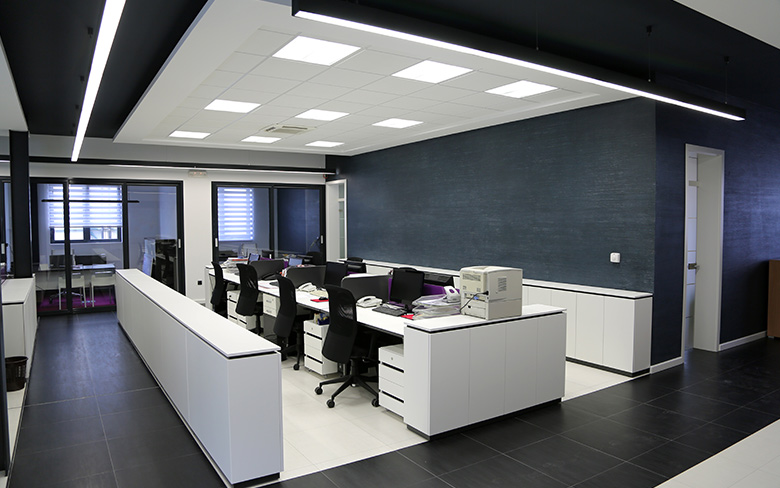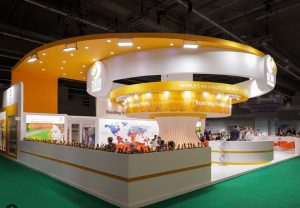Can PoE-Enabled LED Lighting Systems Share Networks with Other Digital Systems?

In recent years, Power over Ethernet (PoE) technology has garnered significant attention, particularly as a supportive infrastructure for LED lighting systems. PoE offers a streamlined solution for powering and managing various devices, including LED lights, over a single Ethernet cable. This innovation simplifies installations and opens possibilities for integrated and interconnected digital systems within buildings and smart environments.
However, a pertinent question arises: Can PoE-enabled LED lighting systems effectively share networks with other digital systems? The answer lies in understanding the capabilities, limitations, and considerations of using these technologies together.
What Is Power over Ethernet (PoE) Technology?
Before delving into the specifics of making PoE-enabled LED lighting systems compatible with other digital systems, we must first understand the fundamentals of PoE technology. PoE allows electrical power and data transmission over standard Ethernet cables, typically Cat 5e or Cat 6. This technology eliminates the need for separate power cables, simplifies installations, and reduces costs.
PoE operates within specified power budgets, with standards like IEEE 802.3af, IEEE 802.3at (PoE+), and IEEE 802.3bt (PoE++) defining the maximum power levels delivered over Ethernet cables. These standards ensure safe and efficient power delivery to connected devices, including LED lighting fixtures.
What Is LED Lighting?
LED (Light-Emitting Diode) lighting is a highly energy-efficient and versatile technology that utilizes semiconductor diodes to produce light. Unlike traditional incandescent or fluorescent bulbs, LEDs generate light through the movement of electrons in a semiconductor material, resulting in minimal heat loss and greater energy efficiency. LED lighting systems offer various advantages, including a longer lifespan, lower energy consumption, enhanced durability, and superior light quality, making them ideal for various applications in residential, commercial, and industrial settings.
How Is LED Lighting Better?
LED lighting offers several advantages over traditional lighting technologies, making it a preferred choice for businesses and organizations seeking energy-efficient and sustainable lighting solutions. Some key benefits of LED lighting include:
Light Frequencies Closer to Nature
Compared to conventional lighting sources, LED lighting more closely mimics natural daylight, promoting a healthier and more comfortable indoor environment. By replicating the spectral characteristics of sunlight, LED lighting can enhance mood, alertness, and overall well-being, particularly in environments with limited access to natural light.
Improves Occupant Productivity
Studies have shown that LED lighting can positively impact occupant productivity and cognitive performance in workplaces, educational facilities, and healthcare settings. By providing consistent, flicker-free illumination with customizable brightness and color temperature, LED lighting helps create optimal lighting conditions that foster concentration, creativity, and task performance.
Smart Lighting Capabilities
LED lighting systems can be integrated with advanced control systems and sensors to enable smart lighting functionalities, such as occupancy sensing, daylight harvesting, and adaptive dimming. Smart LED lighting systems optimize energy efficiency, enhance comfort, and reduce operational costs by dynamically adjusting light levels based on occupancy, ambient light levels, and user preferences.
How Are LED Lighting Systems Being Used to Save Businesses Money?
LED lighting systems offer significant cost-saving opportunities for businesses through improved energy efficiency, streamlined maintenance processes, and enhanced control capabilities. Some ways in which LED lighting systems can help businesses save money include:
Sensors Automate Management
Businesses can automate lighting control and management processes by integrating occupancy sensors, motion detectors, and ambient light sensors into LED lighting systems. These sensors detect occupancy, movement, and ambient light levels, allowing the lighting system to adjust output accordingly, reducing energy consumption and operational costs.
Scheduling Makes Maintenance Easier
LED lighting systems can be programmed to operate on predefined schedules, ensuring that lights are only activated when needed. By scheduling lighting operations based on occupancy patterns, business hours, or specific events, organizations can minimize energy waste and extend the lifespan of LED luminaires, reducing maintenance and replacement costs over time.
Allows Greater Control of the In-Building Environment
With centralized control and management capabilities, LED lighting systems enable businesses to fine-tune lighting settings to meet specific requirements and preferences. Whether adjusting brightness levels, color temperatures, or lighting scenes, organizations can create tailored lighting environments that enhance comfort, productivity, and aesthetics while optimizing energy usage and reducing utility expenses.
Why PoE Makes LED Easier
The integration of Power over Ethernet (PoE) technology with LED lighting systems simplifies installation, management, and operation, offering several advantages for businesses and facility managers, including:
One Cable Solution for Power and Data
PoE eliminates the need for separate electrical wiring and power outlets, as power and data are delivered over a single Ethernet cable. This streamlined installation process reduces material costs, labor expenses, and disruption to existing infrastructure, making deploying LED lighting systems more straightforward and cost-effective in both new construction and retrofit projects.
No Need for Electricians
Since PoE eliminates the need for high-voltage electrical connections, non-electricians can safely install and configure PoE-enabled LED lighting systems with minimal training. This accessibility democratizes access to advanced lighting technologies, enabling businesses of all sizes to leverage the benefits of LED lighting without relying on specialized contractors or electricians.
Plug and Play
PoE-enabled LED luminaires are inherently plug-and-play devices, allowing them to be easily connected to PoE switches or injectors without complex wiring or configuration. This plug-and-play functionality simplifies system expansion, reconfiguration, and maintenance, facilitating scalability and flexibility to accommodate evolving lighting requirements and business needs.
Key Considerations When Integrating with Other Digital Systems
While PoE-enabled LED lighting systems offer numerous benefits, interoperability challenges may arise when integrating them with other digital systems sharing the same network infrastructure. Here are some key considerations:
- Network Congestion: Introducing multiple devices, each with its own data requirements, on the same network can lead to congestion and bandwidth limitations. LED lighting systems typically require minimal bandwidth for control and monitoring. However, network performance may be affected when combining lighting systems with other data-intensive systems like surveillance cameras or VoIP phones.
- Quality of Service (QoS): QoS mechanisms prioritize certain types of network traffic to ensure that critical data, such as VoIP calls or video streaming, receive sufficient bandwidth and keep latency at a minimum. QoS settings are crucial for preventing disruptions or latency when integrating PoE-enabled LED lighting with other digital systems.
- Network Security: Combining diverse digital systems on the same network increases the complexity of network security. Vulnerabilities in one system could compromise the entire network. Implementing robust security measures, such as VLAN segmentation, firewalls, and encryption, helps mitigate these risks and safeguard sensitive data.
Despite these challenges, integrating PoE-enabled LED lighting with other digital systems is feasible with careful planning and implementation. Here are some integration solutions:
- Network Segmentation: Segmenting the network into separate virtual LANs (VLANs) for different types of devices helps isolate traffic and optimize network performance. LED lighting systems can be assigned to a dedicated VLAN, ensuring minimal interference with other systems.
- Bandwidth Management: Use QoS mechanisms to prioritize network traffic based on application requirements. This step will ensure sufficient bandwidth is allocated for critical systems so that LED lighting control data does not adversely impact network performance.
- Collaborative System Design: Collaborative system design involves coordinating with stakeholders, including lighting designers, IT professionals, and building automation specialists, to develop integrated solutions that meet the requirements of all systems involved. This approach ensures compatibility and interoperability from the outset.
The convergence of PoE technology and LED lighting represents a significant milestone in the evolution of lighting systems. By taking steps to ensure a seamless integration, these two innovations can offer businesses and organizations a comprehensive solution that combines energy efficiency, sustainability, and advanced control capabilities.
Learn more about PoE or browse our products page for advanced PoE solutions by Versa Technology.






